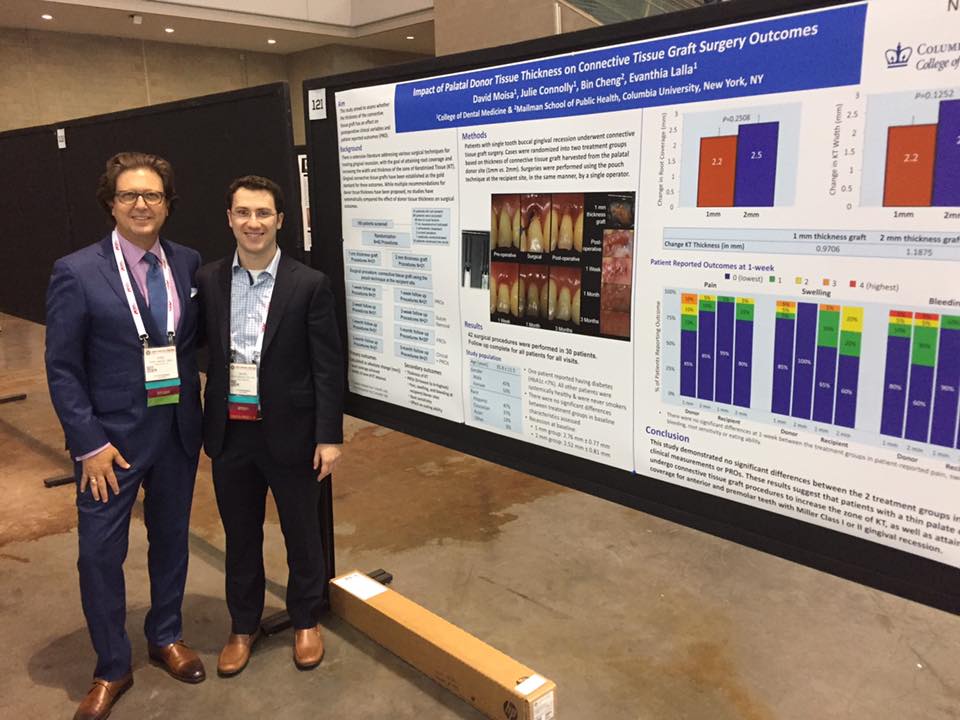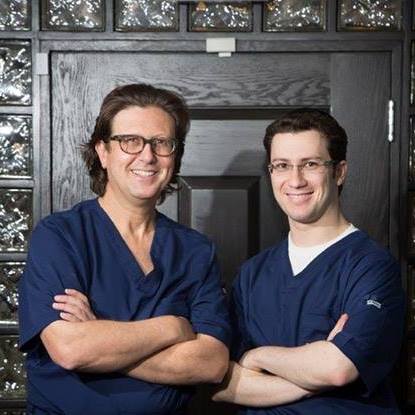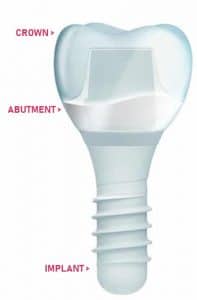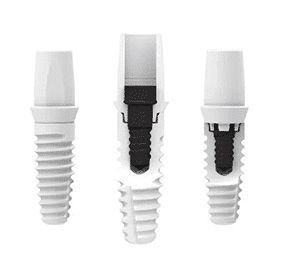David Moisa, D.D.S., M.S. is a Diplomate of the American Board of Periodontology and is board-certified in Periodontology and Dental Implant Surgery. He completed the prestigious Columbia University Postgraduate Program in Periodontics. During this three-year residency, he completed a Master’s of Science Thesis based on his research entitled “Impact of Palatal Donor Tissue Thickness on Connective Tissue Graft Surgery Outcomes. A Pilot Randomized Clinical Trial.” His research was selected for presentation at the American Academy of Periodontology and Dr. Moisa presented it at the National Meeting in 2017. Dr. Moisa’s study was then published in the American Journal of Periodontology in September 2019. Additionally, Dr. Moisa was honored by being selected for the Melvin L. Morris Periodontal Research Fellowship Award upon completion of his training.
Immediately after completing his residency program, Dr. Moisa was invited to a faculty position, and became a Clinical Assistant Professor at the Columbia University College of Dental Medicine, where he taught Periodontics to dental students, and was involved in a multicenter clinical trial for the treatment of severe periodontal disease. He continues teaching Periodontology, providing continuing education courses to other dentists.
What is a Dental Implant?
A Dental Implant is an artificial tooth root that is placed into the upper or lower jaw to replace a missing tooth or teeth. It is often done via Computer Guided Surgery and is 100% biocompatible (the same material as hip and knee replacements). A periodontist places the implants, and the patient’s dentist restores the implant (attaches the teeth).
Dental Implants can be an option for those who have lost a tooth or multiple teeth for various reasons such as; periodontal disease or an injury.
There are three parts to a dental implant. The implant itself is a titanium screw or anchor that fuses to the patients bone after a period of healing (typically 2 to 4 months). An abutment which attaches the tooth or teeth to the implant. Usually, the periodontist places a temporary abutment, and the restoring dentist places the final abutment. And finally, the replacement tooth or teeth which are either screwed or cemented to the abutments.
Ceramic Dental Implants
Holistic Dentistry is on the rise due to an increase in our population suffering from allergies, metal hypersensitivities and compromised immune systems.
Over the years, research has linked periodontal disease with multiple medical issues. We know oral bacteria can travel to other parts of our bodies in the bloodstream, which puts patients at further risk for Heart Disease, Rheumatoid Arthritis, High Blood Pressure, Stroke, Alzheimer’s and Dementia, Diabetes and even Cancer.
Today, we’re finding more and more patients being proactive with regards to their overall health and well-being. We understand getting dental implants can be an overwhelming experience for our patients, especially those concerned with putting anything foreign in their bodies. It’s important to know the makeup of dental implants and the alternatives that exist in the dental industry today.
What are Ceramic Implants?
Ceramic dental implants are essentially identical to traditional titanium dental implants with the exception they are made of a ceramic or glass-like substance. There is no metal in these implants which is a big advantage for people who prefer to have non-metallic implants placed. Ceramic implants have been used in Europe for many years and are FDA approved here in the United States. We have seen excellent success using ceramic implants in our practice.
Why do we Recommend a Zirconia over a Titanium Dental Implant?
We let the patient decide on a case-by-case basis as the zirconia and titanium dental implants are equally successful and we’re confident in using both styles. Occasionally, the titanium dental implant is preferable because there are currently more options, parts, and pieces available to us to handle very complex restorative issues. However, that only exists in a minority of our cases.
How Does a Ceramic Dental Implant Function as a Replacement for a Tooth?
A ceramic dental implant is identical in its function to a titanium dental implant in that it is replacing the root portion of the tooth or teeth that are missing. The implant is placed into the upper or lower jawbone and allowed to heal (integrate) into the bone for a period of time – generally three months – at which time the patient is then referred back to their restorative dentist to have their teeth or tooth fabricated to be placed on top of the implant. The time that we wait is for osseointegration to occur, which is when the surrounding bone fuses to the wall of the ceramic implant and locks it in place so then it can function like any other permanent tooth.
What are the Advantages and Disadvantages of using Zirconia Dental Implants?
There is no disadvantage to using a zirconia ceramic implant over a titanium dental implant. The benefit is that we can provide an equally successful option to replace teeth for patients who prefer non-metallic implants. A secondary benefit is that ceramic implants are generally white in color. In situations where the gum is very thin and on occasion there can be some shine through to the implant surface, a white implant surface will look more tooth-like than a traditional titanium surface which has more gray coloring.







